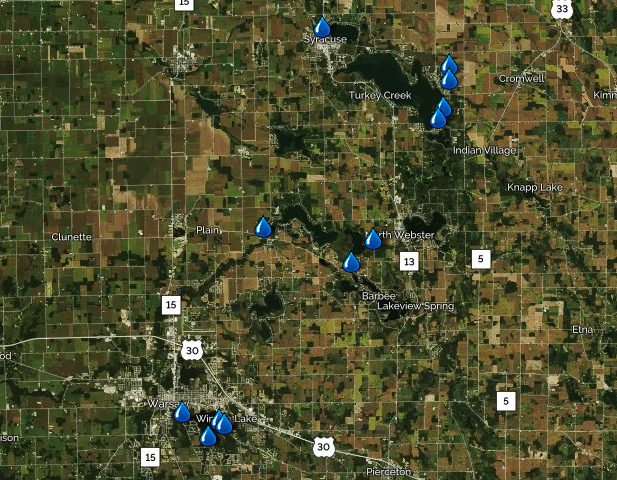
WINONA LAKE – With the 12 stream sensors recently installed by the Lilly Center for Lakes & Streams, Kosciusko County residents are invited to make lake science part of their daily lives.
Not only can residents see the data that is being gathered, they can more closely follow the Lilly Center’s work as the team interprets the data and uses it to inform research on topics including cyanobacteria, or blue-green algae, according to a provided news release.
See the live stream at lakes.grace.edu/live-data.
The state-of-the-art water monitoring equipment is installed at 12 inflowing and outflowing stream sites around Winona, Wawasee, Syracuse, Tippecanoe, Oswego and James lakes. These solar-powered sensors gather and transmit data hourly, every day, year-round. They consist of two main parts: the sensor that sits in the bottom of the stream and the data logger, the box mounted outside of the stream, that receives and sends out the data.
Among other benefits, the stream sensors identify increased water flow. Knowing when and where spikes in rainfall and runoff occur allows the Lilly Center to determine what may have washed into the streams (and subsequently the lakes) and how to address it in the future. This data is used for cyanobacteria research. When coupled with nutrient sampling (completed bi-weekly, year-round by the Lilly Center’s team) the Lilly Center can monitor the “diet” of the lake: what nutrients enter, leave, and get stored up, and in what amounts.
Nutrients contribute heavily to algae composition and growth, including cyanobacteria. Based on previous studies, cyanobacteria growth is an issue that is unique to each lake. The ratio of algae to toxin, the composition of the algae communities, and the nutrient issues each lake experiences are all specific to an individual lake and its watershed.
With these stream sensors, the Lilly Center has an eye on the county’s major lakes. The team can more quickly find potential patterns between the presence of cyanobacteria and its toxin on the lakes, and identify where more unique strategies may be required.
To learn more, and see the live data stream, visit lakes.grace.edu/live-data or call 574-372-5100, ext. 6446.




